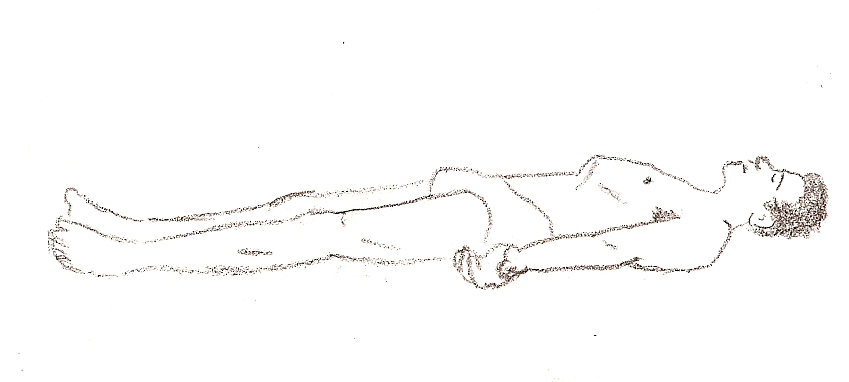Shavasana, aligns the spine. The brain and spinal column are command central for the entire body. Align the spine and the body begins to function properly. Shavasana can be performed by people of all ages, regardless of their level of fitness. We can all lay down. Shavasana is completely restorative. And it can be done almost anywhere.
Shavasana should always be done on a flat, level surface. Begin by slowly lowering the body from a sitting position with knees bent. Lower the spine one disc @ a time, with full conscious awareness of the way the body feels as it is rolling down toward the ground. Make certain that the shoulder blades are flat against the ground and that the spine is straight. Then lower the legs one @ a time. To perform Shavasana properly we must completely relax each and every part of the body. This takes practice. I recommend that you take time for total relaxation in Shavasana @ least once a day, preferably within minutes of returning home from work. I try to perform Shavasana anytime I notice an imbalance in the way my body feels. This means that I am usually on the floor several times a day. I always feel better immediately after.
Dharma Mittra, a modern yoga master, has this to say about Shavasana:
"All restorative poses can be held for 5 to 30 minutes since they don't create any undue tension, sensation, or strain. Shavasana, Corpse Pose, is the pose of total relaxation, and the only pose in which a yogi breathes through the mouth. Beginners often skip this pose @ the end of practice but they are missing one of yoga's most powerful moments. With every breathe you allow awareness to enter the deepest part of yourself. Resting, but with your mind fully aware, Shavasana calms the brain, relaxes the body, helps lower blood pressure, and rebalances the entire system. Ten minutes will bring you all these benefits; fifteen minutes is preferable, and corresponds to two or three hours of deep sleep."
The very first thing I ever teach any student new to Kriya Yoga is Shivasana. If you only have 10 minutes a day to dedicate to yoga, I would encourage each and everyone of you to practice this one pose. You will reap the benefits each and every time you do it.



 RSS Feed
RSS Feed